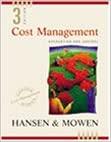Question
1. The following table shows the data for Canadas aggregate production function with constant return to scale and the output elasticity with respect to capital
1. The following table shows the data for Canadas aggregate production function with constant return to scale and the output elasticity with respect to capital equal to 0.3.
| Year | GDP (billions of 2002 dollars) | Capital Stock (billions of 2002 dollars) | Employment (millions) |
| 1961 | 264.5 | 525.6 | 6.06 |
| 1971 | 437.7 | 824.7 | 8.08 |
| 1981 | 647.3 | 1277.4 | 11.31 |
| 1991 | 808.1 | 1715.1 | 12.86 |
| 2001 | 1120.1 | 2071.1 | 14.94 |
| 2010 | 1325 | 2668.7 | 17.04 |
a). Find the values of total factor productivity for the given years above.
b). Complete the following table by calculating the average annual growth rates (%) for GDP, capital stock, employment, and total factor productivity. While it is not necessary to show all your calculations, show the formulae you use, and also explain and illustrate how you obtain your answers.
| Year | GDP | Capital Stock | Employment | TFP |
| 1961-1971 |
|
|
|
|
| 1971-1981 |
|
|
|
|
| 1981-1991 |
|
|
|
|
| 1991-2001 |
|
|
|
|
| 2001-2010 |
|
|
|
|
-1-
c). Can you find in your above table a stylized fact, if any, that is also observed in other industrial countries during 1971-81? Relative to the other periods in the table, did output grow at reasonably high rate during this period? If so, what was the driving force?
d). Did output during 1991-2001 grow faster than the previous decade? What was the driving force behind the growth during this period?
e). Which decade has the lowest output growth? Explain concisely.
2. The output of an economy is characterized by a Cobb-Douglas production function with constant return to scale and an output elasticity with respect to capital equal to 0.3. Also given are the following parameters: 30% saving rate, 5% depreciation rate, 2% population growth rate, and the technology factor is 2.
a). Find the capital-labour ratio, and also the output, consumption and investment on a per capita basis in the steady state equilibrium.
b). Is a government policy that raises the saving rate to 40% socially desirable? Explain your answer with reference to a comparison of this new steady state equilibrium and the initial steady state equilibrium in a) above.
c). If the initial capital-labour ratio is 30, is the economy operating efficiently in the sense that welfare cannot be improved? Explain concisely. What if the initial capital-labour ratio is 15? Again explain concisely.
Step by Step Solution
There are 3 Steps involved in it
Step: 1

Get Instant Access to Expert-Tailored Solutions
See step-by-step solutions with expert insights and AI powered tools for academic success
Step: 2

Step: 3

Ace Your Homework with AI
Get the answers you need in no time with our AI-driven, step-by-step assistance
Get Started


